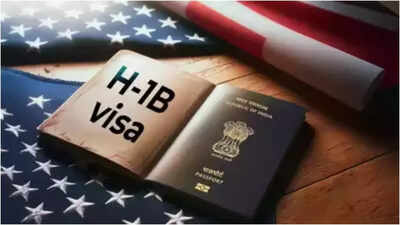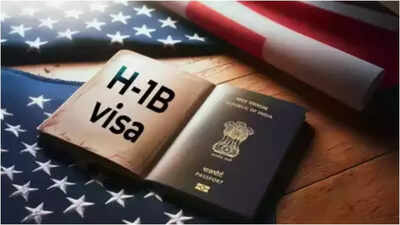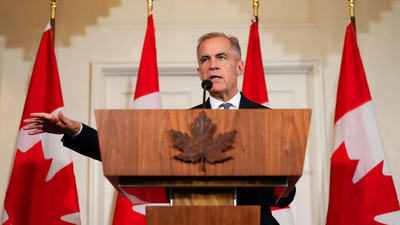$100,000 H-1B visa fee: Who pays, who doesn’t? Trump admin attempts to settle confusion over policy

A month after US President Trump announced a jaw-dropping $100,000 price tag for certain visa applicants, the administration has finally spilled the details on how to pay up—and who might get a free pass. USCIS on Monday rolled out a payment portal and clarified that only applicants with a receipt showing the fee has been submitted can move forward, while some, like student visa holders, might dodge the surcharge entirely.
Who are exempted from paying $100,000
The new USCIS guidelines said existing visa holders, which include international students on F-1 visas and professionals on L-1 visas, will not have to pay $100,000 when they apply for a change of status to H-1B.“It says the fee only applies to cases filed for people outside the United States, so they can come in,” said Dan Berger of Green & Spiegel in an interview, as per Forbes. “Employers were nervous about doing change of status because the $100k might apply if they travel.” The guidance explicitly states, “The Proclamation also does not apply to a petition filed at or after 12:01 a.m. Eastern Daylight Time on September 21-2025, that is requesting an amendment, change of status, or extension of stay for an alien inside the United States where the alien is granted such amendment, change, or extension. Further, an alien beneficiary of such petition will not be considered to be subject to the payment if he or she subsequently departs the United States and applies for a visa based on the approved petition and/or seeks to reenter the United States on a current H-1B visa.” However, the guidance also states that an employer would need to pay the fee if USCIS determines, such as by denying an application, that an individual is ineligible for a change of status or an extension of stay. For example, USCIS states the H-1B fee would apply if the individual “is not in a valid nonimmigrant visa status or if the alien departs the United States prior to adjudication of a change of status request.” USCIS states that any holder of a current H-1B visa, or any alien beneficiary following petition approval, can travel in and out of the United States. According to USCIS, “The Proclamation does not apply to any previously issued and currently valid H-1B visas, or any petitions submitted prior to 12:01 a.m. Eastern Daylight Time on September 21-2025.”
How to pay new fees
Petitioners should submit the required $100,000 payment using pay.gov, following the instructions on pay.gov at the following link: https://www.pay.gov/public/form/start/1772005176. After clicking on the link, it states: “Use this form to pay your H-1B VISA PAYMENT TO REMOVE RESTRICTION.” Many employers hope it may be possible to gain an exception from the fee to file H-1B visas for individuals located outside the United States. According to the section of the presidential proclamation addressing an exception, “The restriction imposed . . . shall not apply to any individual alien, all aliens working for a company, or all aliens working in an industry, if the Secretary of Homeland Security determines, in the Secretary’s discretion, that the hiring of such aliens to be employed as H-1B specialty occupation workers is in the national interest and does not pose a threat to the security or welfare of the United States.” The USCIS guidance appears more restrictive and less welcoming than the language of the proclamation. The USCIS guidance inserts words or phrases that do not appear in the proclamation, including “extraordinarily rare,” “high threshold,” “significantly undermine” and “no American worker is available to fill the role.”According to USCIS, “Exceptions to the $100,000 payment are granted by the Secretary of Homeland Security in the extraordinarily rare circumstance where the Secretary has determined that a particular alien worker’s presence in the United States as an H-1B worker is in the national interest, that no American worker is available to fill the role, that the alien worker does not pose a threat to the security or welfare of the United States, and that requiring the petitioning employer to make the payment on the alien’s behalf would significantly undermine the interests of the United States.”
Who are the F-1 and L-1 visa holders ?
The F-1 Visa (Academic Student) allows you to enter the United States as a full-time student at an accredited college, university, seminary, conservatory, academic high school, elementary school, or other academic institution or in a language training program. You must be enrolled in a program or course of study that culminates in a degree, diploma, or certificate and your school must be authorized by the U.S. government to accept foreign students.And the L-1A nonimmigrant classification enables a US employer to transfer an executive or manager from one of its affiliated foreign offices to one of its offices in the United States. This classification also enables a foreign company that does not yet have an affiliated U.S. office to send an executive or manager to the United States with the purpose of establishing one. The employer must file a Form I-129, Petition for a Nonimmigrant Worker, with fee, on behalf of the employee.






